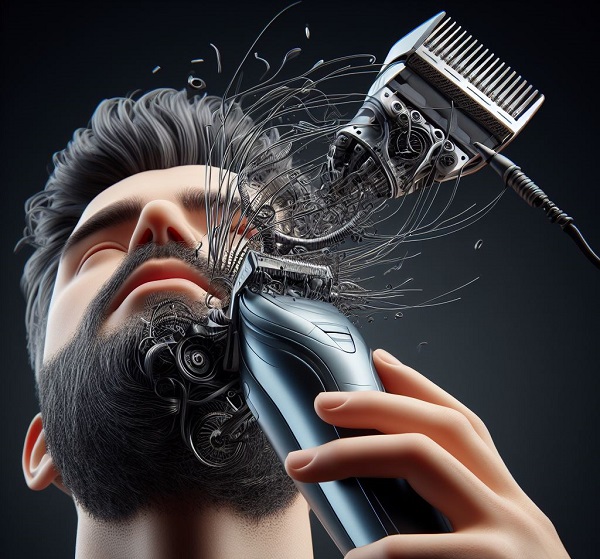When it comes to maintaining a well-groomed appearance, many individuals rely on the trusty companion known as a trimmer. Whether it’s for beard, mustache, or hair trimming, these devices have become an integral part of our daily grooming routines.
However, a common frustration among trimmer users is the sensation of their hair being pulled during the process. In this article, we will delve into the reasons behind this annoying issue and explore ways to prevent it.
Why Does My Trimmer Pull My Hair?
Your trimmer might be pulling your hair because of dull, dirty blades, a wrong guard size, or an incorrect trimming technique. To prevent this, clean and oil the blades regularly, use the right guard size, and apply light pressure while moving the trimmer in the direction of hair growth.
Understanding How Trimmers Work
Before we get to the root of the problem, it’s essential to comprehend how trimmers function. These devices consist of blades that oscillate or rotate to cut hair. When in use, the blades come into contact with the hair, and it’s this contact that can sometimes lead to hair pulling.
The Common Problem: Hair Pulling
Hair pulling, while not experienced by everyone, can be a genuinely uncomfortable and painful sensation. It’s akin to your hair being yanked out rather than smoothly cut, making your grooming routine more of a nuisance than a pleasure.
Factors Contributing to Hair Pulling
Several factors can contribute to the problem of hair pulling when using a trimmer:
Blade Dullness
Dull blades are one of the primary culprits behind hair pulling. When trimmer blades lose their sharpness, they tend to catch and pull hair rather than cutting it cleanly.
Hair Type
The texture and thickness of your hair play a significant role. Coarser or curly hair is more prone to being pulled by trimmers than finer hair.
Incorrect Technique
Improper handling of the trimmer, such as moving it too quickly or at an incorrect angle, can cause hair pulling.
The Importance of Proper Maintenance
To prevent your trimmer from pulling your hair, regular maintenance is crucial:
Blade Sharpening
Regularly sharpening the blades will ensure a clean cut and reduce the chances of hair pulling.
Cleaning
Keeping the trimmer clean from hair clippings and debris will prevent obstructions that can lead to hair pulling.
Tips to Prevent Hair Pulling
To enjoy a comfortable and efficient trimming experience, consider the following tips:
Invest in High-Quality Trimmers
Higher-end trimmers often come with sharp, precise blades that are less likely to pull hair.
Trim Dry Hair
Trimming dry hair is generally easier and less likely to cause hair pulling.
Use a Pre-Trimmer Routine
Brushing and detangling your hair before trimming can significantly reduce the risk of hair pulling.
Alternative Solutions
If the problem persists despite taking preventive measures, consider these alternatives:
Manual Clippers
Manual clippers, also known as scissors, provide precise control and are less likely to pull hair.
Waxing
Waxing can be an effective method for hair removal that doesn’t involve trimming at all.
Conclusion
In conclusion, the sensation of your trimmer pulling your hair can be an unpleasant experience during your grooming routine. However, by understanding the causes and taking appropriate preventive measures, you can enjoy a smoother and more comfortable trimming experience. Proper maintenance, choosing the right tools, and following best practices are key to avoiding this issue.
FAQs
1. How often should I sharpen my trimmer blades?
Regularly sharpen your trimmer blades every 2-3 months to ensure a clean cut.
2. Are there specific trimmer brands that are less likely to pull hair?
Some high-quality trimmer brands are known for their precision and are less likely to cause hair pulling. Do your research and invest wisely.
3. Can using a trimmer on wet hair prevent hair pulling?
Trimming wet hair is not recommended, as it can lead to clogging and ineffective cutting. Dry hair is usually easier to trim.
4. Is there a specific technique to avoid hair pulling with a trimmer?
Ensure you move the trimmer slowly and at the right angle. Experiment with different techniques to find what works best for you.
5. What should I do if hair pulling continues despite taking preventive measures?
Consider switching to manual clippers or explore alternative methods like waxing to avoid hair pulling during grooming.
